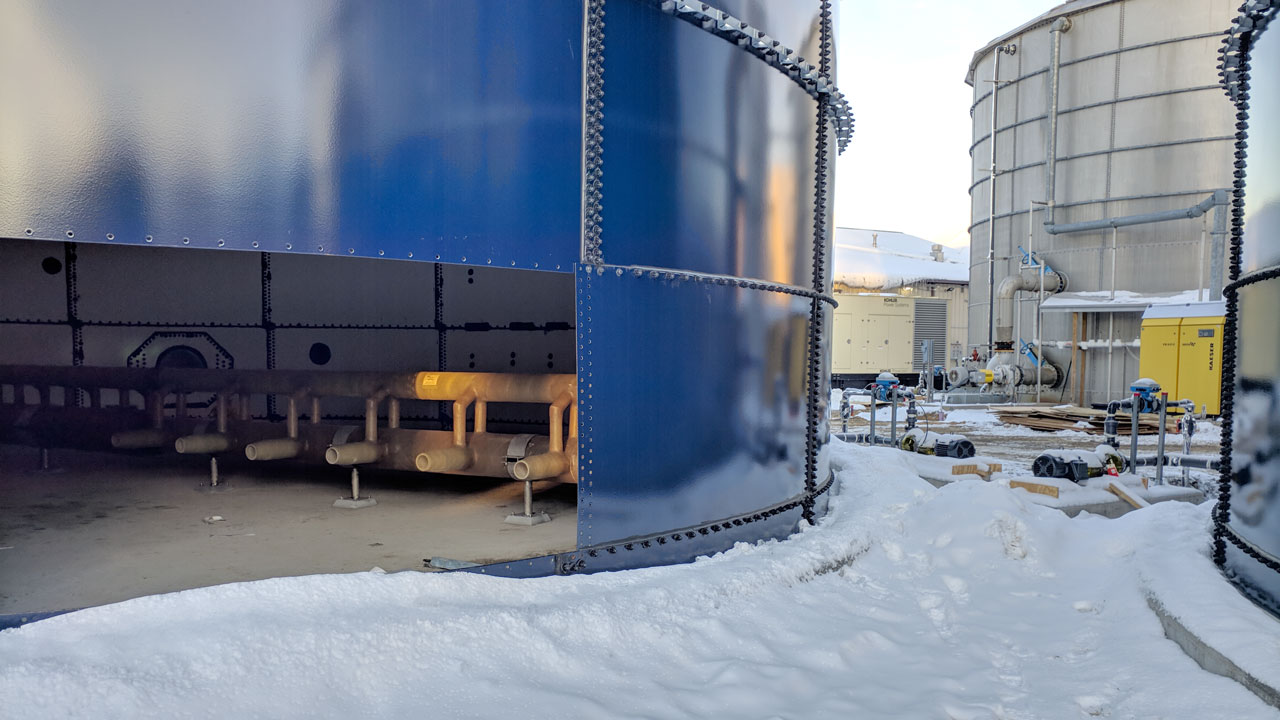
Tetra Tech’s Arie Kremen is an expert in leachate treatment and management, landfill design and permitting, and water resource management.
In this post, our solid waste solutions expert provides recommendations on lessening leachate management concerns.
Leachate management is one of, if not the most significant long-term, recurring cost for landfill care. It accounts for up to 20 to 30 percent of the operations and maintenance (O&M) expenses in regions with temperate climates. What’s more, leachate management continues well into most landfills’ post-closure period and will remain subject to evolving regulatory requirements. While it’s really important to consider each landfill’s site-specific circumstances before making any decisions, I offer a few general observations on factors that may help you develop a comprehensive, economically feasible, and environmentally sound approach to leachate management.
Leachate Reduction
Stormwater control measures reduced leachate generation and careful consideration should be given to slopes, channels, as well as temporary and permanent covers. Stormwater control can make a significant difference in the quantity of leachate generated but will not eliminate the need for leachate management. If site conditions are conducive and regulators supportive, leachate recirculation can be a viable leachate management tool. Leachate recirculation enhances waste decomposition, increases landfill gas yield, and accelerates air space recovery. Cost-benefit analyses of leachate recirculation indicate that the practice has a small positive effect—about $0.005 per gallon. This means you get more out of recirculation in terms of air space and methane than you have to invest in infrastructure and energy.
Leachate Evaporation
This method reduces the leachate volume, producing water vapor and a leachate concentrate that can be recycled to the landfill. Landfill gas, waste heat, or natural gas can be used as fuel sources. Evaporation is energy intensive but can be cost-competitive if a site lacks economical access to more cost effective alternatives. Sites located in semi-arid and arid areas with adequate land resources may be able to use evaporation ponds. Capital and O&M costs for engineered evaporation systems range from $0.08 to $0.10 per gallon, a large portion of which is energy costs. The marginal cost for evaporation ponds throughout a 30 year service life is about $0.02 per gallon.
Leachate Disposal
Available disposal options for treated leachate, effluent, are greatly affected by economic considerations. Off-site leachate disposal is a viable alternative if you have access to a publicly-owned treatment works (POTW) without incurring significant leachate conveyance and pre-treatment costs. Minimum pre-treatment objectives are defined through National Categorical Pretreatment standards (see Table 1). POTWs may also impose additional restrictions.
Table 1: Effluent Limitations from RCRA Subtitle D
Non-Hazardous Waste Landfill (40 CFR Part 445)
| Regulated Parameter | Maximum Daily Limit (mg/l) | Maximum Monthly Average Limit (mg/l) |
|---|---|---|
| BOD5 | 140 | 37 |
| TSS | 88 | 27 |
| NH3-N | 10 | 4.9 |
| α-Terpineol | 0.033 | 0.016 |
| Benzoic Acid | 0.12 | 0.071 |
| v | 0.025 | 0.014 |
| Phenol | 0.026 | 0.015 |
| Zinc | 0.20 | 0.11 |
| pH | 6-9 | 6-9 |
If effluent disposal to a POTW is not feasible or possible, consider effluent disposal to nearby located surface water, which is regulated by the National Pollutant Discharge Elimination System (NPDES). NPDES imposes limits on oxygen demanding contaminants, dissolved and suspended solids, metals, and compounds toxic to aquatic life. Many states have developed additional watershed-based limits.
Leachate Treatment
Leachate can be treated by biological processes, such as activated sludge. Physicochemical processes are used to remove metals, ammonia, and dissolved solids, among other parameters. Membrane separation is an effective method for clarifying mixed liquor produced during biological treatment. Reverse osmosis can produce high quality effluent, including elimination of the characteristically dark brown-black tint of leachate. Biological treatment and metals precipitation produce sludges that, upon dewatering, can usually be disposed of at the landfill generating the leachate.
Biological treatment and clarification units for off-site disposal to a POTW require smaller reactor volumes and aeration capacity than a comparable facility discharging to surface water, resulting in lower costs. In many instances, on-site treatment is competitive with leachate hauling for off-site disposal, which is subject to fuel price fluctuations, increased truck traffic, and operational flexibility considerations.
Be sure to conduct an economic evaluation to evaluate site-specific conditions, develop treatment objectives, and perform an alternatives comparison to identify the preferred leachate management approach. Table 2 provides some guidance on typical leachate treatment unit costs:
Table 2: Marginal Leachate Disposal Costs ($/gal)
| Treatment Technology/Disposal to | POTW | On-site | ||
|---|---|---|---|---|
| Disposal via Tanker Truck | 0.039 | 0.125 | – | – |
| Membrane Bioreactor (MBR) | 0.033 | 0.040 | 0.040 | 0.065 |
| Conventional Activated Sludge (CAS) | 0.033 | 0.039 | 0.035 | 0.076 |
| MBR with Reverse Osmosis (RO) | – | – | 0.064 | 0.095 |
| CAS with RO | – | – | 0.250 | 0.350 |
About the author
Dr. Arie Kremen
Dr. Arie Kremen is a senior client manager in New Jersey with 25 years of experience in the environmental and solid waste industry.
He specializes in landfill engineering and leachate treatment and management.